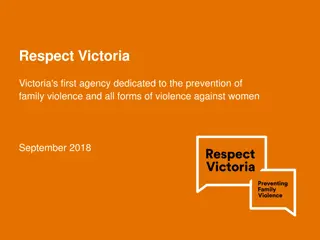SaFETy Score as a Predictor of Gun Violence in Adolescent/Young Adult Patients in a Primary Care Setting
Research by Sanjay Batish et al. investigates the validity of the SaFETy questionnaire in predicting gun violence in non-urban primary care settings. The study conducted at four clinics involved adolescent patients aged 14-24, assessing SaFETy scores along with other variables to explore gun violence exposure. Limitations included small sample size and a limited time frame. The research aims to determine the role of primary care providers in addressing the gun violence epidemic among adolescents.
Download Presentation

Please find below an Image/Link to download the presentation.
The content on the website is provided AS IS for your information and personal use only. It may not be sold, licensed, or shared on other websites without obtaining consent from the author.If you encounter any issues during the download, it is possible that the publisher has removed the file from their server.
You are allowed to download the files provided on this website for personal or commercial use, subject to the condition that they are used lawfully. All files are the property of their respective owners.
The content on the website is provided AS IS for your information and personal use only. It may not be sold, licensed, or shared on other websites without obtaining consent from the author.
E N D
Presentation Transcript
SaFETy score as a predictor of gun violence in adolescent / young adult patients in a primary care setting Sanjay Batish1, MD; Anna Gilbert2; Cory Lutgen3; Elisabeth Callen3, PhD 1Batish Family Medicine; 2MedServe; 3AAFP National Research Network This research was made possible through an award from the American Academy of Family Physicians Foundation and the support of the American Academy of Family Physicians National Research Network
The Research Question Primary Research Question Is the SaFETy questionnaire a valid predictor of gun violence in a non-urban primary care setting? Secondary Research Questions Can adolescents be screened for gun violence exposure in a non-urban primary care setting? Can PCP s have an active role in reducing the gun violence epidemic?
Research Design and Method I Figure 1: Location of Participating Clinics Roanoke Chowan Community Health Center Study Design: 6-month longitudinal, quantitative, survey-based study Setting: four non-urban primary care clinics Participants: adolescent patients ages 14-24 Variables: SaFETy score and other assessments/survey questions and demographics, gun violence exposure Piedmont Adult & Pediatric Medicine Associates Analysis: Mann-Whitney U, Wilcoxon Signed Rank Cabarrus Rowan Community Health Centers Limitations : small sample size, limited time frame Batish Family Medicine (6-months vs. 24-months)
Research Design and Method II Figure 2: SaFETy Score Single Survey, issued at baseline and follow-up (6-months) SaFETy Acronym Question Scale Contribution 0 (never) 1 (once) 2 (twice) 3 (3-5 times) 4+ (6 or more times) 0 1 1 1 4 In the past 6 months, including today, how often did you get into a serious physical fight? Serious Fighting Measures: SaFETy Score (4-item predictor of gun violence exposure) ACEs: Adverse Childhood Experiences (physical and emotional abuse, neglect, and household dysfunction experienced in childhood) 6-month Violence Exposure Lifetime Community Exposures Parental Support Conflict resolution beliefs (retaliatory attitudes) Peer influence Firearm Behavior Resilience Demographics 1 (none) 2 (some) 3+ (many, most, or all) 0 0 1 Friend Weapon Carrying How many of your friends have carried a knife, razor, or gun? 0 (never) 1 (one or twice) 2 (a few times) 3 (many times) 0 0 0 1 In the past 6 months, how often have you heard guns being shot? Community Environment How often, in the past 6 months, including today, has someone pulled a gun on you? 0 (never) 1 (once) 2 (twice or more) 0 3 4 Firearm Threats
What the Research Found Positive correlation between ACEs, the SaFETy Score, and Lifetime Gun Violence Exposure Rates of violence exposure were similar in our population and the original SaFETy study which was conducted in an urban ED setting No significant change in an individual s level of gun exposure over 6 months The belief in retaliating vs forgiving a perceived transgression ratio is 2:1 in our study population
What this means for Clinical Practice Family Physicians have a role to play in the gun violence epidemic This pilot study shows that screening adolescents for gun violence exposures or other related determinants is possible in a primary care setting Further research with a larger sample size and longer study duration is needed to validate the SaFETy score in this population and setting
Optional: Add citation if work is published























